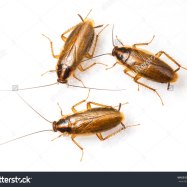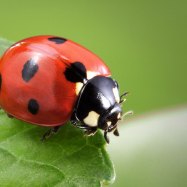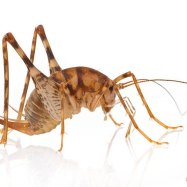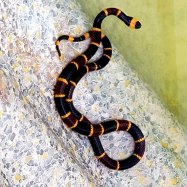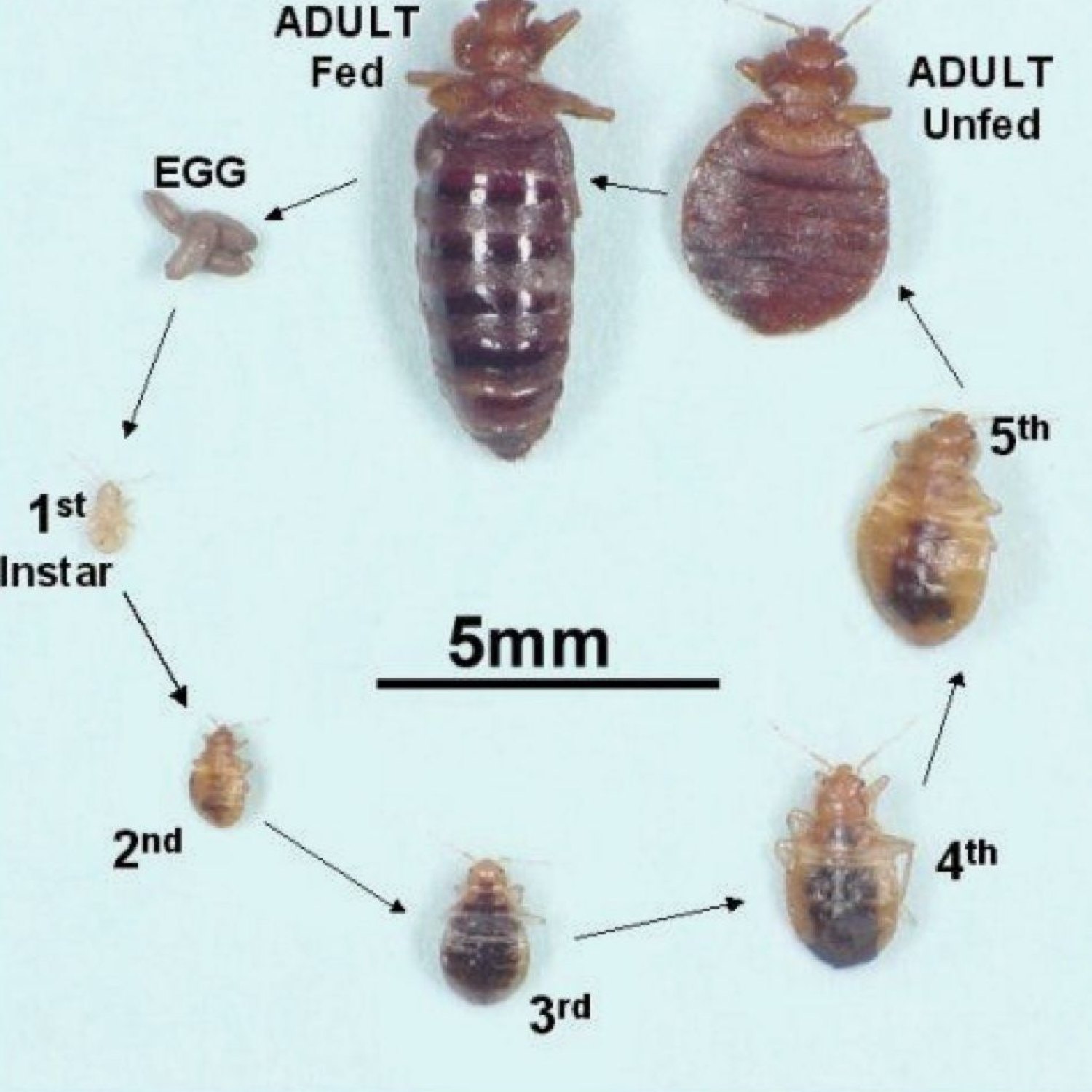
Bed Bugs
4-5 mm
Bed bugs, a small but pesky creature, are common in human dwellings and establishments. These 4-5 mm long insects, belonging to the family Cimicidae, have a flat and oval body. Don't let their size fool you, they can cause itchy bites and discomfort. Regular cleaning and pest control can help keep these critters at bay. #Bedbugs #PestControl #HomeMaintenance
Animal Details Summary:
Common Name: Bed Bugs
Kingdom: Animalia
Habitat: Human habitations
The Intriguing World of Bed Bugs: A Closer Look at Cimex lectularius
As humans, we all have our own fair share of fears and phobias – heights, spiders, and even clowns. But there's one tiny creature that has crept into our nightmares and has become a subject of disgust and terror – the notorious bed bug.Scientifically known as Cimex lectularius, bed bugs are tiny, blood-sucking insects that have plagued humankind for centuries. These pests have been a constant source of frustration and discomfort for people all over the world Bed Bugs. From high-end hotels to humble homes, bed bugs have become a global problem that is hard to eradicate.
But aside from the fact that they are pesky creatures, what else should we know about bed bugs? In this article, we will take a deeper dive into the fascinating world of these tiny insects.
The Basics of Bed Bugs
Before we dive into the nitty-gritty details, let's first get to know more about what exactly bed bugs are. Bed bugs are a species of insects that belong to the kingdom Animalia, phylum Arthropoda, and class Insecta. They are part of the Hemiptera order and the Cimicidae family. With their scientific name Cimex lectularius, bed bugs can easily be distinguished from other insects by their unique characteristics.A Global Phenomenon
Bed bugs are one of the most widely distributed pests in the world. They are found in all parts of the globe, from the most developed countries to the most impoverished regions. This widespread distribution can be attributed to their feeding habits and how they travel Bolivian Anaconda.The Feeding Method of Bed Bugs
One of the most defining features of bed bugs is their feeding method – hematophagy. This means that bed bugs feed on the blood of warm-blooded animals, including humans. They usually feed at night, when their hosts are asleep, and their bites can cause discomfort, itching, and irritation.Contrary to popular belief, bed bugs do not transmit diseases to humans. However, their bites can cause allergic reactions to some people. Additionally, their presence can lead to psychological distress, as the fear of being bitten or having them invade your home can cause a great deal of anxiety.
Where Can You Find Bed Bugs?
As their name suggests, bed bugs are commonly found in beds and other sleeping areas. However, they can also be found in other areas where people spend a significant amount of time, such as sofas, recliners, and even public transportation.Bed bugs are also known to hide in crevices, cracks, and other small spaces, making them hard to detect. This is why they can easily hitchhike and spread from one location to another, making them a global phenomenon.
The Appearance of Bed Bugs
Bed bugs are small, flat, and oval-shaped insects that are about 4-5 mm in length. They have a rusty brown or reddish-brown coloration, making them easily blend in with their surroundings.One of the evolutionary adaptations of bed bugs is their ability to flatten their body shape. This allows them to easily hide in small cracks and crevices, making it challenging to find and eliminate them.
The Importance of Natural Language Processing in Studying Bed Bugs
As technology continues to advance, the study of bed bugs has been made easier, thanks to Natural Language Processing (NLP). This is a field of artificial intelligence that focuses on understanding and processing human language.Through NLP, researchers have been able to study past records and literature about bed bugs and their distribution, habits, and behavior. With the help of sophisticated algorithms, NLP has made it possible to understand and analyze large amounts of data, making it easier to track the spread of these pests and come up with effective control and eradication methods.
The Impact of Bed Bugs
Aside from the discomfort and annoyance that bed bugs bring, their presence can also have significant implications on various industries and economies. For instance, the hospitality industry has taken a hit with the rise of bed bug infestations in hotels and other accommodations.Additionally, bed bug infestations in residential areas can cause financial strain on families. The costs associated with hiring pest control professionals and replacing infested furniture and belongings can be overwhelming and stressful, especially for people who are already struggling to make ends meet.
Preventing and Eliminating Bed Bugs
As the saying goes, prevention is better than cure. This is especially true when it comes to bed bugs. Here are some ways to prevent bed bug infestations in your home:- Regularly inspect and vacuum your home, paying special attention to crevices, cracks, and other hidden areas.
- When traveling, thoroughly inspect your luggage and belongings before bringing them inside your home.
- Wash your bedding, curtains, and other linens regularly in hot water.
- Use bed bug-proof mattress encasements.
- Be cautious when purchasing second-hand furniture, as they may contain bed bugs.
- Seal cracks and crevices in walls and furniture to prevent bed bugs from entering.
- Use bed bug detectors and monitors to detect their presence early on.
If, despite all your efforts, you still end up with a bed bug infestation, it's best to seek professional help from pest control experts. They have the necessary knowledge and equipment to effectively eliminate bed bugs and prevent future infestations.
In Summary
Bed bugs may just be tiny insects, but their impact is far-reaching and can cause significant distress and discomfort. By getting to know more about these creatures and understanding their habits and behaviors, we can develop better strategies to prevent and eliminate bed bug infestations.With Natural Language Processing, the study of bed bugs has become more comprehensive, allowing researchers to gather and analyze massive amounts of data. This, in turn, has helped in tracking the spread of bed bugs and coming up with effective control and eradication methods.
Although they may seem like a never-ending problem, with proper prevention and control measures, we can keep bed bugs at bay and have a more peaceful and comfortable living space.

Bed Bugs
Animal Details Bed Bugs - Scientific Name: Cimex lectularius
- Category: Animals B
- Scientific Name: Cimex lectularius
- Common Name: Bed Bugs
- Kingdom: Animalia
- Phylum: Arthropoda
- Class: Insecta
- Order: Hemiptera
- Family: Cimicidae
- Habitat: Human habitations
- Feeding Method: Hematophagous
- Geographical Distribution: Worldwide
- Country of Origin: Unknown
- Location: Found in human dwellings and establishments
- Animal Coloration: Rusty brown or reddish-brown
- Body Shape: Flat and oval
- Length: 4-5 mm
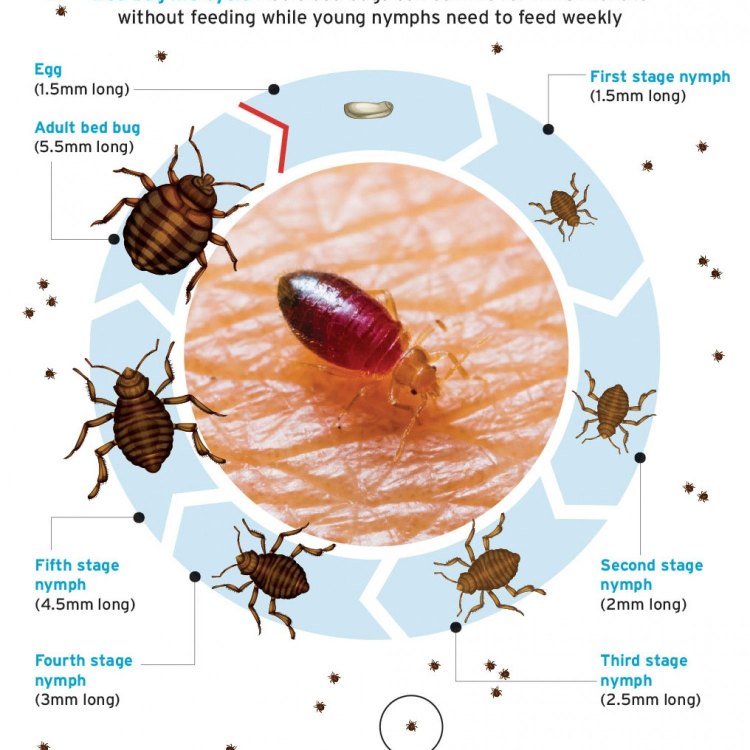
Bed Bugs
- Adult Size: 4-5 mm
- Average Lifespan: 4-6 months
- Reproduction: Sexual
- Reproductive Behavior: Mating occurs through traumatic insemination
- Sound or Call: No distinct sound or call
- Migration Pattern: Sedentary
- Social Groups: Solitary
- Behavior: Nocturnal and feed on human blood
- Threats: Can cause skin irritations and allergic reactions
- Conservation Status: Not applicable
- Impact on Ecosystem: None significant
- Human Use: None
- Distinctive Features: Flat and oval shape, wingless
- Interesting Facts: Bed bugs can survive up to a year without feeding
- Predator: None
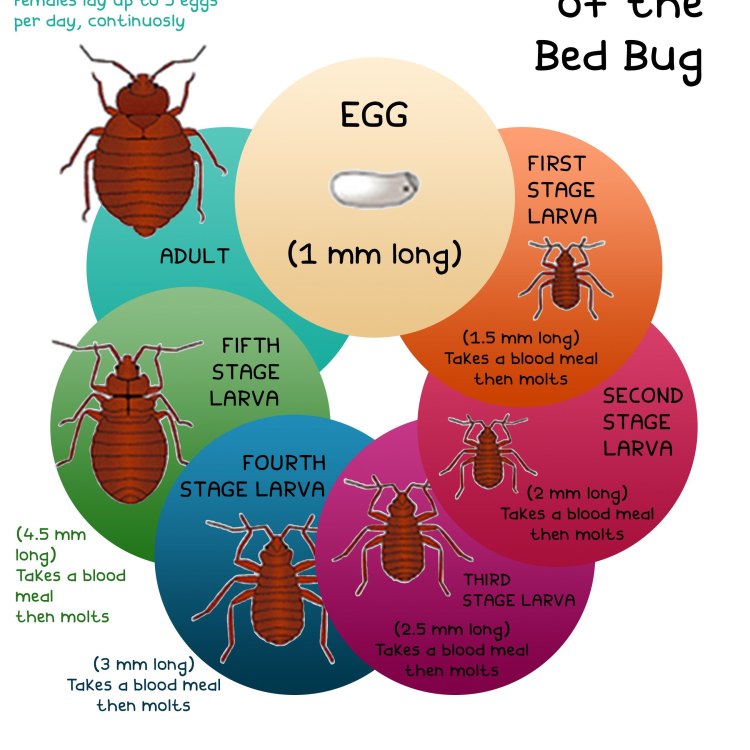
Cimex lectularius
Surviving the Night with Bed Bugs: Understanding and Dealing with These Pesky Pests
It's been a long day, and you can't wait to crawl into your warm and cozy bed for a good night's sleep. However, as you settle in, you start to feel something crawling on your skin. Panicked, you turn on the lights and discover small, brown insects scurrying away from the light. It's every homeowner's nightmare – bed bugs PeaceOfAnimals.Com.These tiny pests have been around for centuries, and they are notoriously known for infesting beds and mattresses, feeding on human blood while we sleep. They may seem like harmless creatures, but make no mistake, bed bugs can cause severe skin irritations and allergic reactions. In this article, we will take a closer look at these pesky bugs and learn how to coexist with them.
But first, let's get to know bed bugs a little better.
The Basics of Bed Bugs
Bed bugs, scientifically known as Cimex lectularius, are small, wingless insects that belong to the family Cimicidae. They are found all over the world and have been around for centuries, with evidence of their existence dating back to ancient Greece and ancient Rome. Adult bed bugs are about 4-5 mm in size, roughly the size of an apple seed, and are reddish-brown in color. Their flat and oval-shaped bodies enable them to hide in tiny cracks and crevices, making them difficult to spot.Life Cycle and Behavior
The average lifespan of a bed bug is 4-6 months, depending on the availability of food and suitable living conditions Braque Francais. They feed primarily on human blood and are usually active at night, making them nocturnal creatures. They have a keen sense of smell, allowing them to locate their victims by detecting body heat and carbon dioxide. Once they find a suitable sleeping host, they will feed for about 5-10 minutes before crawling back to their hiding spots – often in mattresses and box springs.Bed bugs reproduce through sexual reproduction, and mating occurs through traumatic insemination. This means that the male bed bug pierces the female's abdomen and inseminates her directly, rather than through the conventional reproductive organs. The females can lay one to five eggs per day, and they can produce up to 500 eggs in their lifetime.
Interesting Behaviors and Adaptations
One of the most unique and interesting behaviors of bed bugs is their mating process. This traumatic insemination, also known as hypodermic insemination, is a way for the male bed bugs to ensure that their sperm successfully reaches the female's ovaries. It may sound like a violent act, but it's a normal process for these insects.Another remarkable adaptation of bed bugs is their ability to survive without a blood meal for extended periods. While they prefer to feed every 5-10 days, they can survive for up to a year without feeding. This is why it's essential to take immediate action when you suspect a bed bug infestation because they can stay hidden for a long time.
Threats and Impact on Humans
Though bed bugs are not known to transmit diseases, their bites can cause severe skin irritations and allergic reactions for some people. These reactions can range from small red bumps to large blisters, and they are often accompanied by intense itching. Bed bugs are also known to cause psychological distress, anxiety, and insomnia in some individuals due to the fear of being bitten while sleeping.Dealing with a bed bug infestation can also be emotionally and financially taxing. It can be challenging to get rid of these bugs completely, and it often takes multiple treatments to eradicate them fully. This is why proper prevention and early detection are crucial in managing a bed bug problem.
Mitigating Bed Bug Infestations
When it comes to bed bugs, prevention is better than cure. There are a few things you can do to decrease the chances of a bed bug infestation in your home. These include regularly washing and drying your sheets and bedding on high heat, vacuuming your mattress and the areas around it, inspecting second-hand furniture before bringing them into your home, and sealing cracks and crevices where bed bugs can hide.If you suspect a bed bug infestation, immediate action is necessary. Begin by thoroughly cleaning your home, focusing on your bedroom and other areas where you spend a significant amount of time. It's also essential to hire a professional pest control service to treat your home and eliminate any remaining bed bugs. Keep in mind that multiple treatments may be necessary to get rid of these resilient pests completely.
Bed Bug Conservation Status and Impact on Ecosystem
Unlike other insects, bed bugs do not have a significant impact on the ecosystem. They feed on human blood and do not harm plants or animals. They do not spread or reproduce fast enough to cause an imbalance in the ecosystem. Therefore, bed bugs are not listed as endangered or threatened species, and there are no conservation efforts aimed at them.Debunking Bed Bug Myths
Due to their notorious reputation, there are many misconceptions and myths surrounding bed bugs. Here are some common myths debunked:Myth: Bed bugs only infest dirty and unkempt homes.
Reality: Bed bugs are attracted to warmth and carbon dioxide, not dirt. They can thrive in any environment as long as there is a consistent blood source.
Myth: Bed bugs can fly and jump.
Reality: Bed bugs are wingless and cannot fly or jump. They move by crawling and can spread from one location to another by hitchhiking on humans or their belongings.
Myth: Bed bugs are invisible to the naked eye.
Reality: While bed bugs are small and flat, they are not invisible. With a keen eye and thorough inspection, you can spot them.
Myth: Bed bugs only bite at night.
Reality: While bed bugs are primarily active at night, they can also feed during the day if they are hungry. They are attracted to body heat and carbon dioxide, not a specific time of day.
Dealing with Bed Bugs: A Team Effort
Experiencing a bed bug infestation can be stressful and frustrating, but it's important to remember that it's not your fault. These pests can infest any home, regardless of how clean or tidy it is. It's essential to work together as a team to get rid of them and prevent future infestations. Here are some tips for dealing with bed bugs:1. Seek professional help.
While DIY treatments may seem like a more cost-effective solution, hiring a professional pest control service is the best option for effectively eliminating bed bugs.
2. Don't panic and stay organized.
Dealing with a bed bug infestation requires patience and organization. Create a plan of action and stick to it. Don't let panic take over and make sure to stay calm.
3. Wash and dry all clothing and bedding on high heat.
Bed bugs cannot survive high temperatures, so washing and drying all your clothing and bedding on high heat can kill them.
4. Be vigilant and keep a clutter-free home.
Regularly inspect your home and keep it free of clutter. This makes it easier to spot and treat bed bug infestations.
The Bottom Line
Dealing with bed bugs can be a taxing and frustrating experience, but it's essential to take immediate action to prevent them from spreading. With proper prevention and swift action, it is possible to coexist with these pesky pests. Remember, they may be resilient, but so are we. With the right plan and professional help, we can eliminate bed bugs and have a peaceful night's sleep once again.

The Intriguing World of Bed Bugs: A Closer Look at Cimex lectularius
Disclaimer: The content provided is for informational purposes only. We cannot guarantee the accuracy of the information on this page 100%. All information provided here may change without prior notice.





